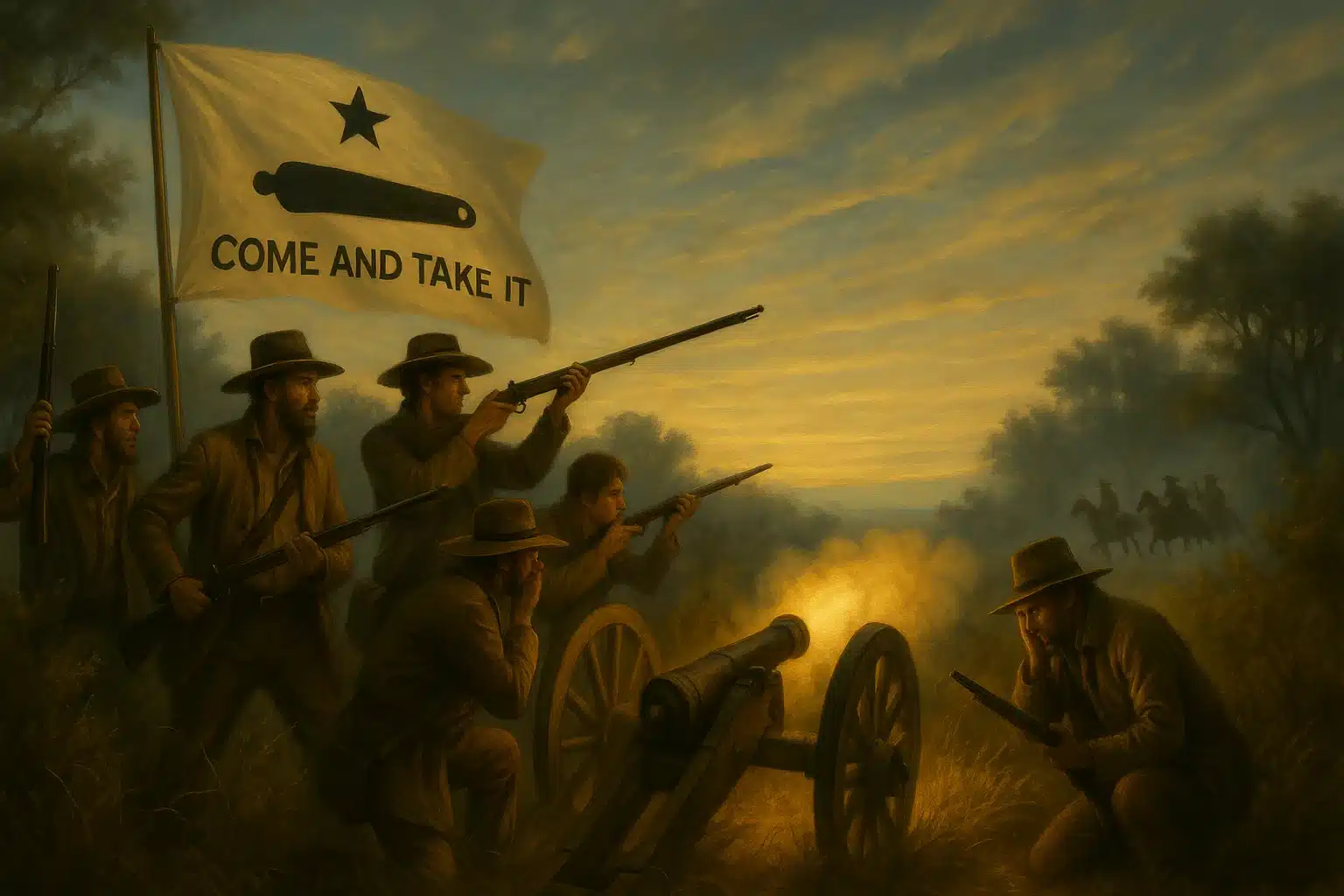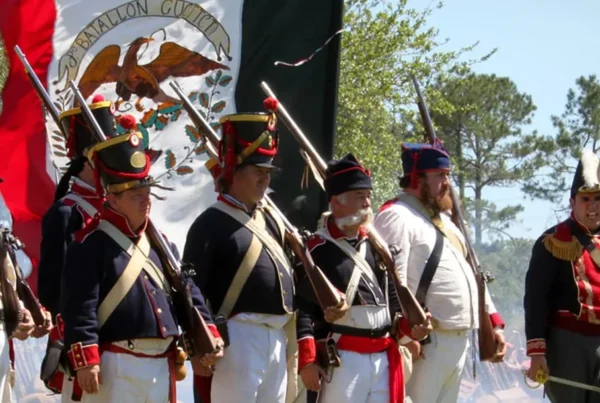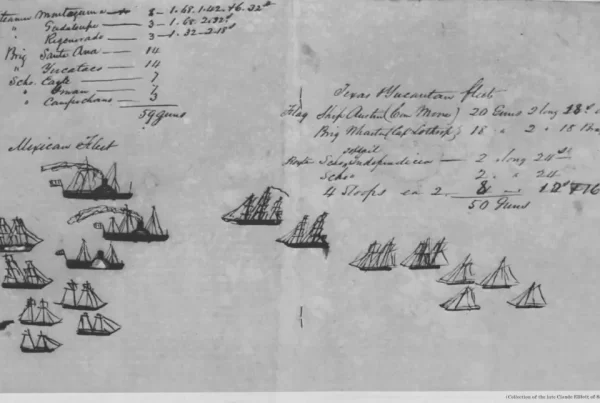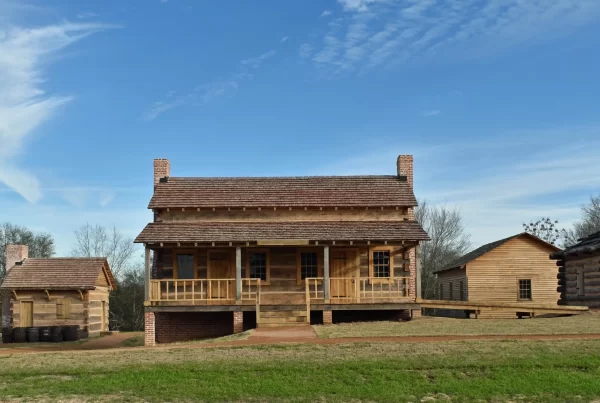The “Lone Star Flag” is the official flag of the state of Texas, symbolizing its history as an independent republic and its enduring spirit of independence. The flag consists of a vertical blue stripe at the hoist with a single white five-pointed star, and two horizontal stripes to the right—white on top and red on the bottom.

First adopted in 1839 when Texas was a sovereign nation, the flag has since become one of the most recognized state symbols in the United States. Its lone star gives Texas its well-known nickname: The Lone Star State.
Revolutionary Origin
The Lone Star Flag first served as the flag of the Republic of Texas in 1839, though there is debate about when it originated. Texas continued to use the flag as its state flag after it became part of the United States in 1845. The Lone Star flag uses the same red, white, and blue colors as the United States flag.
Historians do not know for sure who designed the flag. One possibility is William H. Wharton, the Texas senator who introduced the bill to adopt the design during the Texas Congress of 1839. Another possibility is Austin artist Peter Krag, who was paid $10 ($200 in today’s money) by the Texas Senate to produce the drawing below. The sketch bears the signature of President Mirabeau Lamar, who approved the design.

However, earlier witnesses attest to the use of a lone star flag, albeit of different design, in use by Texans prior to official adoption. For example, the gunsmith Noah Smithwick, in a memoir dictated to his daughter, stated that he saw such a flag at the Battle of Gonzales in 1835. Ahead of the battle, “While some were busy with arms and ammunition, others were devising a flag.”
”I cannot say who designed it nor who executed the design… [but] to my certain knowledge the first Lone Star flag used in the resolution was gotten up at Gonzales for Austin’s army and consisted of a breadth of white cotton cloth about six feet long, the the center of which was painted in black a picture of the old cannon, above it a lone star and beneath it the words, ‘Come and take it,’ a challenge which was lost on the Mexicans. It was not called the Lone Star, however, but the Old Cannon flag.”
The Goliad Flag
Another early Texas flag was the Goliad Flag, also known as the “Bloody Arm Flag.” This flag was used by Philip Dimmitt and his troops at the Presidio La Bahía in late 1835. It featured a white background with a severed arm holding a bloody sword, symbolizing defiance and a willingness to fight for independence.
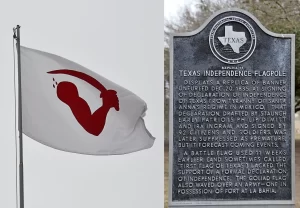
The flag’s design reflected the determination of Texan revolutionaries, particularly those stationed at Goliad, who played a crucial role in early battles of the revolution. The imagery was meant to warn Mexican forces that Texans were ready to fight to the death for their freedom. The Goliad Flag was one of several banners that contributed to the evolving symbolism of the Texas Revolution and the Texians’ aspirations to statehood.
Official State Adoption
The later Lone Star flag officially adopted in 1839 added color to the “Come and Take It” flag. Senator Wharton’s resolution stated, “the national flag of Texas shall consist of a blue perpendicular stripe of the width of one third of the whole length of the flag, with a white star of five points in the centre thereof, and two horizontal stripes of equal breadth, the upper stripe white, the lower red, of the length of two thirds of the whole length of the flag.”
Symbolic Meaning
The Texas Flag Code, which is part of current law, says that the red in the flag stands for bravery, the blue stands for loyalty, and the white for purity. The law also includes a lengthy official celebration text to be used for the retirement of a state flag. That text states in part,
“My colors are in the waters of the Red River and in the Bluebonnets of the Texas Hill Country.
“You’ll find my spirit at the Light House of Palo Duro and in the sands of Padre Island;
“I am at the Johnson Space Center in Houston and atop the oil wells of West Texas.
“From the expanse of the Big Bend to the Riverwalk of San Antone–all of Texas is my home!”
Another ceremonial text involving the Lone Star Flag is the state pledge of allegiance: “Honor the Texas flag; I pledge allegiance to thee, Texas, one state under God, one and indivisible.”
Proper Observances
The Texas Flag Code was first adopted in 1933 and revised in 1993. The Code lays out the rules for proper observances of how to fly the flag and store it. These include:
- When the flag is displayed against a wall, the blue stripe should be at the observer’s left.
- When the flag is displayed vertically, the blue stripe should be at the top and the white stripe should be on the observer’s left.
- No flag other than the national flag should be placed above the state.
- The state flag should be underneath the national flag when the two are flown from the same halyard. When flown from adjacent flagpoles, the national flag and the state flag should be on flagpoles of equal height, and the national flag should be on the observer’s left.
The Lone Star Flag has a deep-rooted history that extends beyond its official adoption in 1839, dating to the time of the Texas Revolution. Over time, the flag has become one of the most recognized state symbols in the U.S., carrying with it a legacy of resilience and pride.
